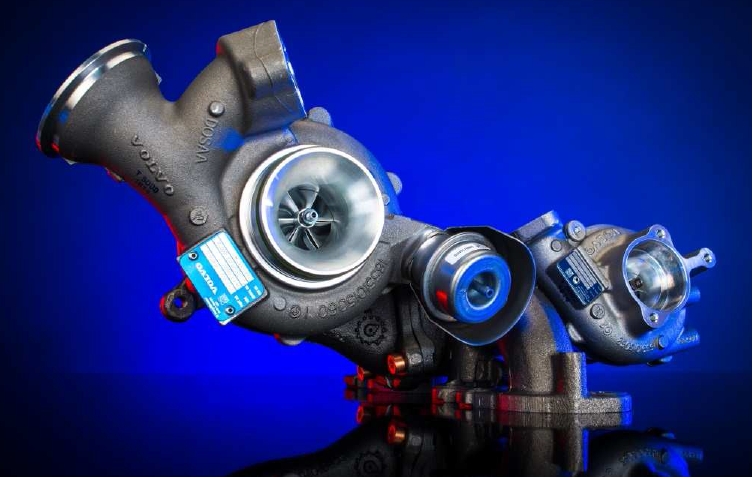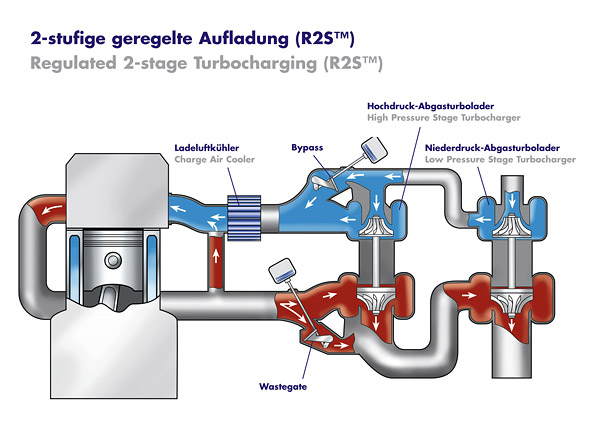BorgWarner’s regulated two-stage turbocharging (R2S®) technology boosts the 2.0-liter diesel engine for Volvo’s new Drive-E powertrain family. Available for nearly all Volvo models, the four-cylinder engine achieves an output of 190 hp (140 kW) and a maximum torque of 400 Nm.
BorgWarner’s R2S turbocharging technology helps the engine set new standards of efficiency and performance. In the Volvo V40 D4, the BorgWarner-boosted engine helps improve fuel economy and reduce emissions, achieving an average fuel consumption of 71 mpg (3.3 liters/100 km) and reducing carbon dioxide (CO2) emissions to 85 g/km.
“BorgWarner’s R2S technology is a key enabler for downsizing diesel engines, helping automakers comply with upcoming emissions regulations while maintaining high engine output,” said Frédéric Lissalde, President and General Manager, BorgWarner Turbo Systems. “We appreciate our long-term partnership with Volvo Cars and are very proud that Volvo chose BorgWarner’s advanced turbocharging technology for its new high-volume, clean diesel engine. Our many years of turbocharger development and production experience help automakers around the world offer fuel-efficient engines that deliver an outstanding fun-to-drive experience.”
BorgWarner’s R2S turbocharging technology combines two turbochargers of different sizes to allow the turbine and compressor sides of the system to continuously adapt and deliver high boost pressures over the entire engine speed range. At low engine speeds, the entire exhaust gas flow is directed to the smaller, high-pressure turbocharger, resulting in a quick rise in boost pressure. At higher engine speeds, the wastegate valve opens, and the exhaust gas is redirected to the larger, low-pressure turbocharger.
The entire fresh air flow is first compressed by the low pressure stage. In the high pressure stage, it is compressed further and then the charging air is cooled. Due to the precompression process, the relatively small HP compressor can reach a high pressure level so that it can force the required amount of air to flow through the system.
At low engine speeds, i.e. when the exhaust mass flow rate is low, the bypass remains completely closed and the entire exhaust mass flow is expanded by the HP turbine. This results in a very quick and high boost pressure rise. As the engine speed increases, the job of expansion is continuously shifted to the LP turbine by increasing the cross-sectional area of the bypass accordingly.
Regulated two-stage turbocharging therefore allows for continuous adaptation on the turbine and compressor sides to the actual requirements of the operating engine.
The system can be regulated via pneumatic actuators that control the bypass valve in the same manner as when used in mass-produced turbochargers with swing valves. This makes it possible to model a compact charging system (when detailed knowledge of the complex system response is available) that fulfills the highest torque, response and power requirements while utilizing proven components.




















